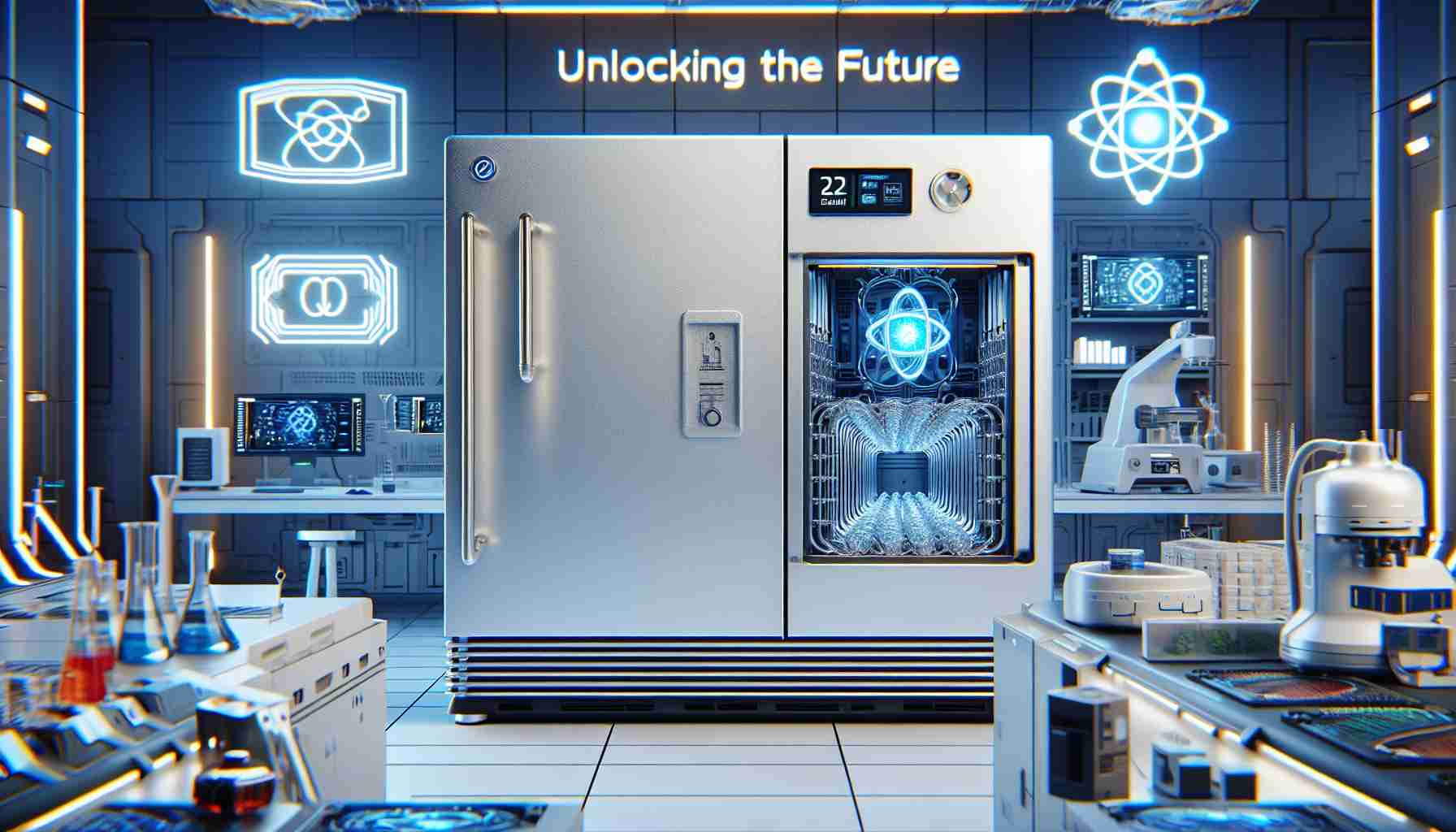- A groundbreaking autonomous quantum refrigerator has achieved the coldest qubit temperature ever at 22 millikelvin.
- This innovation enhances qubit stability, improving maintenance of the ideal state before computation to 99.97%.
- Utilizing thermal baths of microwave radiation, the new technology simplifies the cooling process for quantum computers.
- The autonomous design reduces the need for external input, streamlining the complexities of quantum computing stability.
- This advancement positions quantum technology for significant enhancements in both reliability and performance.
- The future of quantum computing looks promising, with the potential for unlimited computing power on the horizon.
Imagine a world where quantum computers operate with unmatched efficiency and reliability. Thanks to groundbreaking innovations in quantum refrigeration, that future is closer than ever! Researchers have unveiled a revolutionary autonomous quantum refrigerator that has dramatically cooled a qubit to a jaw-dropping 22 millikelvin—the coldest temperature ever reached for qubits. This remarkable achievement could lead to a powerful leap in computing capabilities.
Quantum computers thrive in ultra-low temperatures that stabilize their delicate quantum properties. The new quantum refrigerator utilizes thermal baths of microwave radiation to chill its components, enhancing the stability of qubits and minimizing errors during complex calculations. In fact, this new method boosts the likelihood of a qubit maintaining its ideal state before computation to an impressive 99.97%—a significant upgrade over previous cooling techniques.
This innovative system works alongside traditional dilution refrigerators, offering a unique advantage: it’s autonomous. Once set in motion, it requires no external input, simplifying the complex process of maintaining quantum computing stability. Scientists initially aimed to prove the concept’s viability but were thrilled to find that it exceeded their expectations, revolutionizing our approach to qubit cooling.
With the potential for more reliable quantum computations and reduced hardware demands, this quantum refrigerator is a game changer. As quantum technology continues to evolve, expect a future where unlimited computing power is within reach. The keys to the quantum world are being handed to us—are you ready to embrace the future?
Unlocking Quantum Computing: The Revolutionary Autonomous Refrigerator
The Breakthrough in Quantum Refrigeration
Researchers have recently made significant strides in the realm of quantum computing with the introduction of an autonomous quantum refrigerator that cools qubits to an unprecedented 22 millikelvin. This innovation represents the coldest temperature achieved for qubits, enhancing stability and performance in quantum systems. The ability to maintain qubits at such low temperatures is crucial, as it enables their delicate quantum properties to function optimally.
Pros and Cons of Autonomous Quantum Refrigerators
# Pros:
– Increased Stability: Cooling qubits to 22 millikelvin elevates the stability of quantum states, reducing computation errors to 99.97%.
– Autonomy: The system operates independently, demanding no external input once initiated, thus minimizing human error and maintenance needs.
– Enhanced Computing Power: This technology paves the way for more powerful quantum computing solutions, potentially transforming industries reliant on high-calculation capabilities.
# Cons:
– Complexity of Integration: Adopting this advanced refrigeration method may involve challenges in integration with existing quantum computing hardware.
– Cost Factors: The development and deployment of autonomous refrigerators may entail significant costs, which could limit accessibility for smaller institutions or research groups.
– Limited Understanding: As a relatively new technology, the understanding of its long-term effects on quantum systems remains under investigation.
Market Forecast and Trends
As quantum refrigeration technology continues to develop, experts anticipate exponential growth in the quantum computing sector. The global quantum computing market, projected to reach $65 billion by 2030, will heavily rely on innovations such as autonomous refrigeration to enhance efficiency and capabilities. The push for unbreakable encryption and advanced computational problem-solving solutions will significantly drive market demands.
Frequently Asked Questions
1. How does the new quantum refrigerator work?
The autonomous quantum refrigerator utilizes thermal baths of microwave radiation to cool its components, effectively stabilizing the qubits and allowing them to maintain their state with high fidelity.
2. What impact will this technology have on quantum computing?
This technology will drastically reduce error rates in quantum computations, ensuring that calculations are more reliable, which is essential for practical applications across various fields, including cryptography, materials science, and artificial intelligence.
3. Are there any sustainability considerations with quantum refrigeration?
While traditional refrigeration methods can be energy-intensive, the autonomy and advanced cooling techniques of the new quantum refrigerator could lead to improved energy efficiency. As research progresses, further sustainability practices may emerge, contributing to greener technology development.
Innovations and Future Predictions
The introduction of autonomous quantum refrigerators is just the beginning. Future innovations are likely to focus on:
– Miniaturization of quantum cooling systems to make them suitable for widespread implementation.
– Hybrid systems that combine various cooling methods for optimal performance.
– Enhanced monitoring systems that provide real-time assessments of qubit stability and refrigerator efficiency.
As research continues, we are on the brink of a new era in quantum computing, where the efficiency and reliability of these systems will potentially unlock capabilities previously thought impossible.
For more insights into the world of quantum computing, visit IBM Quantum.













